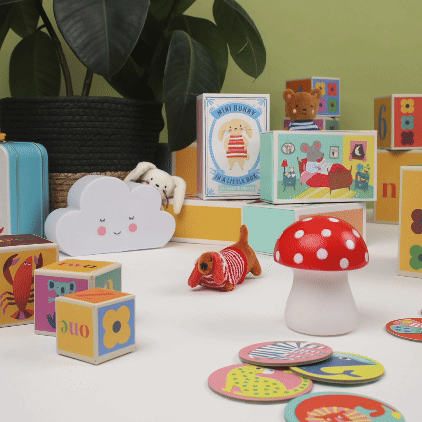How to make the perfect coffee at home
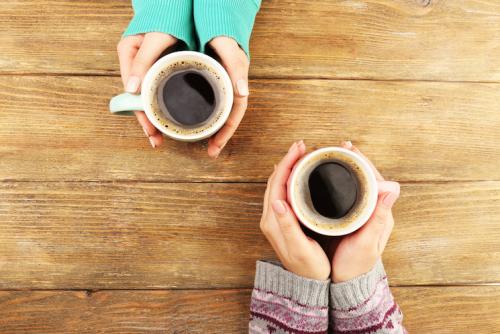
Achieve smooth, rich, barista-quality coffee in your own home.
Image source: Shutterstock
Want to brew barista-quality coffee at home? We’re not talking instant coffee here – we mean the real deal. Whether you like espresso, americano, flat white, latte or cappuccino, we’ll share the tricks of the trade that will help you enjoy a proper coffee in the comfort of your own kitchen.
Two coffees a day keep the doctor away

Drinking coffee in moderation helps reduce the risk of disease
Image source: Shutterstock
Can’t function without at least two cups of coffee a day? We know the feeling. But taking the time to make a good cup of coffee can be about more than just a quick hit. Annwen from Ramblings of a Suburban Mummy says:
“For me coffee is a social thing, it’s a me-time thing and it’s a key part of my weekends in particular. Good coffee is for me a daily essential.”
But the good news is, your coffee habit is good for you! New research shows that drinking two cups a day lowers your risk of developing diseases including Parkinson’s and diabetes and could even reduce liver cancer risk by a third.
That’s because coffee is bursting with antioxidants. In fact coffee contributes over 50% of the antioxidants in the prized Mediterranean diet.
Tools of the trade
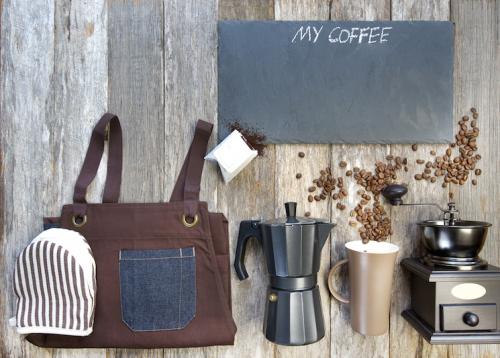
What do you need to make the perfect home-brewed coffee?
Image source: Shutterstock
Good coffee depends on good equipment. But that doesn’t mean you have to go crazy and splurge on an enormous professional espresso machine. Nor do you have to commit yourself to a lifetime subscription of coffee pods.
With just a few, inexpensive pieces of equipment, you’ll soon be making a brilliant brew.
The right beans
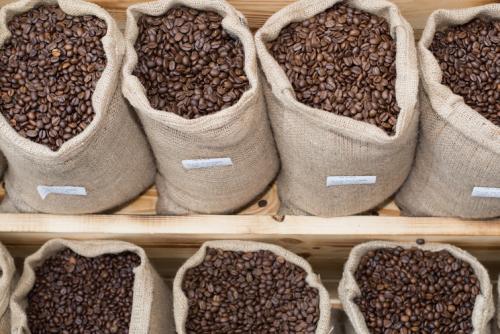
It’s all about the bean
Image source: Shutterstock
Great beans make great coffee. And freshness is key. Coffee is at its best immediately after roasting, so true aficionados buy their beans straight from a local roaster/coffee shop.
Sample as many types of bean as you can to find the perfect one(s) for you. And experiment with roasts. Light roasts will have a more delicate flavour than the dark ones that have been roasted for longer. By the way, it’s a myth that the strong-tasting dark roasts have more caffeine, so choose the flavour and aroma that most appeals to you.
The daily grind
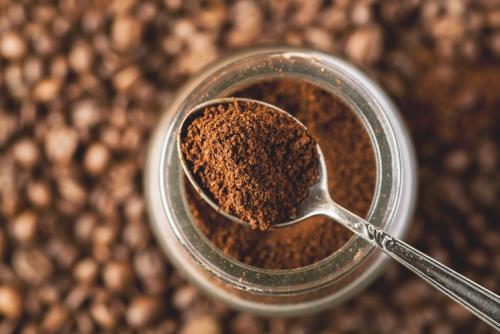
Buy less coffee more frequently to ensure it’s always fresh
Image source: Shutterstock
Coffee begins to lose its flavour within just half an hour of being ground. That’s why grinding your own beans is key to making great coffee. Espresso pots require a coarse grind. For cafetières, you want to achieve a medium grind size - too fine and it will taste bitter; too coarse and your coffee will be too weak.
Grinding the beans yourself will make sure you hang onto as much of the flavour as possible. Only grind as much as you need for each drink, storing the remainder of your beans in an airtight storage jar somewhere cool and dark.
Espresso pot
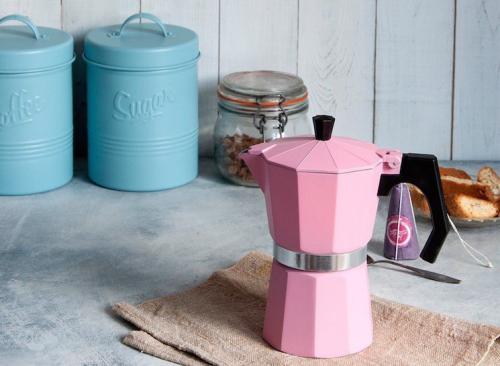
Espresso pot, macchinetta, moka pot – whatever you call it, it’s a thing of beauty.
Pictured above: Classic Espresso Coffee Pot - Was £16.95, now £4.95
Cool as a Vespa and sexy as Sophia Loren, this coffee pot is an Italian classic. It makes the perfect espresso, which you can drink straight or use as a base for flat whites, cappuccinos and lattes.
If you haven’t got one, get one. Head straight to our sale and pick up this espresso pot for just £4.95!
How to use it:
1) Fill the bottom chamber with hot water up to the line. (Using hot water at the start will speed up the percolating process, protecting the coffee from overheating and turning bitter.)
2) Place the filter basket on top and fill it with coarse-ground coffee.
3) Pat the coffee down lightly with the back of a teaspoon (tamping).
4) Screw the top chamber back on.
5) Heat the pot on the hob until the top chamber is full of freshly brewed coffee. Perfetto!
Cafetière
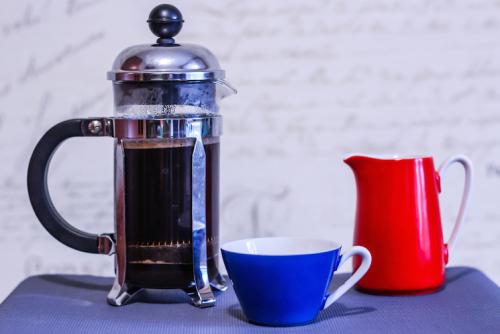
The cafetière is a French classic
Image source: Shutterstock
The cafetière, or French press, is another iconic piece of coffee equipment you shouldn’t be without. We’ll wager most of you already have one lurking at the back of a kitchen cupboard.
If you haven’t had much success with one of these in the past, blame the shop-bought pre-ground coffee – likely out of date and ground too fine – and not your poor old cafetière.
How to use it:
1) Retrieve said cafetière from back of kitchen cupboard and give it a good wash.
2) Add 1 tablespoon of freshly ground (medium grind) coffee per cup.
3) Pour in hot, not boiling, water – water that’s been off the boil for around 30 seconds. Add around 125ml of water per cup.
4) Stir gently.
5) Replace the lid (don’t plunge yet!) and leave for 4 minutes.
6) Slowly push down the plunger (the really satisfying bit). Et voilà!
The great milk debate
You’ll hear coffee purists proudly announce that they never add milk to their coffee. But travel to Italy, France or Spain and you’ll notice that the locals start the day with a milky coffee – it’s certainly easier on the stomach than a full-on espresso first thing.
But if you’re adding milk, should you go for a cappuccino, latte, café au lait or flat white? What is a flat white anyway?
Top barista Celeste Wong from The Girl in the Cafe explains the perfect flat white: “The milk should be thinner than a latte and ‘flatter’ in head volume. A flat white should be a short, strong tasting coffee with milk. That’s why it’s so good!”
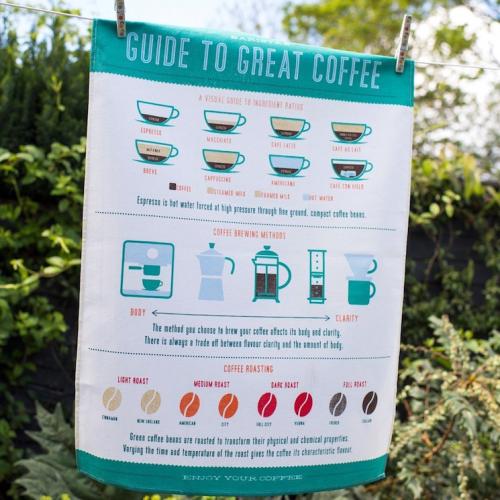
Always keep your coffee formula to hand
Pictured above: Coffee Lovers Tea Towel - £4.95
A coffee chart like the one featured from the Coffee Tea Club blog, will help you get just the right proportions of java to milk. Whatever your fancy, warm milk is best. For frothy coffee like a cappuccino you’ll need a steamer or milk frother to achieve the foam you love.
Otherwise check out this frothy milk hack that Jamie Oliver shares on his website. Just be sure to take care when opening the milk carton. As you know, milk expands rapidly when warmed up!
How to serve
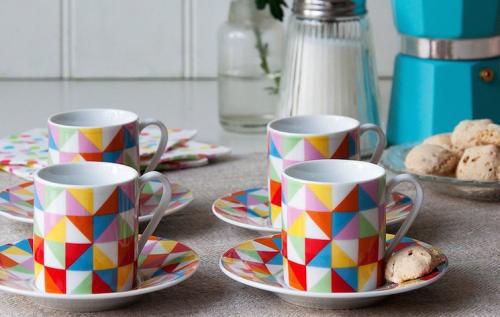
Give your coffee the serving it deserves
Pictured above: Set of 4 Geometric Espresso Cups and Saucers - Was £24.95, Now £6.95
After all that care and attention, your coffee deserves to be served properly. As Tired Mummy of Two says: “A good cup of coffee is not something to be rushed… it should be cherished.” Hear, hear!
Espresso must be served in an espresso cup – both are small, beautiful and perfectly formed. Longer drinks can be served in a tall glass (very Italian but ouchy on the fingers), in a pretty coffee cup or in a smart mug. Don’t forget the amaretti biscuits. Dunking heaven!
And there you have it, the perfect cup of home-brewed coffee. Enjoy!
Classy coffee with the dotcomgiftshop summer sale
Head over to the dotcomgiftshop summer sale to pick up everything you need for the perfect cup of coffee at home…

From left to right: Set of 4 multicolour espresso cups- £6.95 (was £24.95); Turquoise Espresso Shot Cup - £1.00 (was £3.95); Classic Espresso Coffee Pot - £4.95 (was £16.95)

From left to right: Japanese sunflower mug - £1.50 (was £4.95); Stoneware Coffee Cup - £3.95 (was £8.95); Mid Century poppy mug - £1.95 (was £6.95)


